IF you are conscious when the MedSTAR helicopter carrying your traumatised body lands at the new Royal Adelaide Hospital twin helipad, you’ll know two things — one, medically you’re probably in a lot of trouble and, two, the very best help is at hand.
Before you even land at the newly developed new Royal Adelaide Hospital North Tce site, trauma surgeons and other emergency specialists will have considered vital details about your condition from a radio handover by people like Associate Professor Andrew Pearce, clinical director of SAAS MedSTAR and senior emergency physician riding in the helicopter.
Once you’re across the gantry and into the hi-tech retrieval centre of the new Royal Adelaide Hospital, decisions will be made about your next move. “In the unit, we’ve got gases, resuscitation equipment, monitors, heating blankets, all there to be able to hold a patient. So if, for whatever reason, I needed to do any interventions before I went downstairs — rare, but it may happen — I can stop in the retrieval centre and make sure my patient’s safe, especially if they’re busy downstairs,” Professor Pearce says.
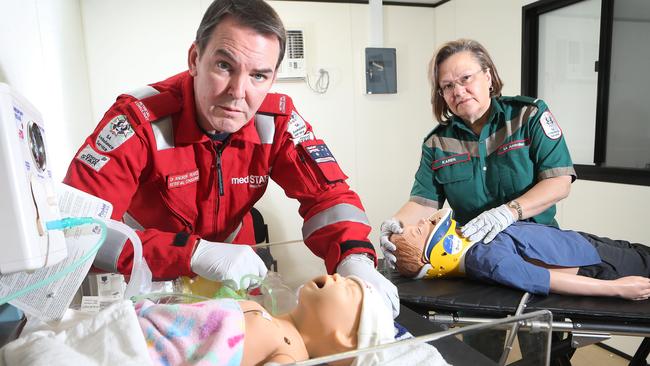
Then it’s into the extra-large, dedicated “hot lifts” and down to the resuscitation room. “That has a (giant video screen with a) direct camera feed to the helipad where they can see us land and can assemble a team that’s ready to go,” Prof Pearce says. “We may go to the resuscitation room, ICU (intensive care unit) or directly to theatre, depending on the state of the patient.”
Those crucial areas and services, including pathology and blood transfusion areas, are all centred around the emergency department. If you’re not in a specialised treatment area, you’ll likely be in one of 70 individual ED cubicles. Each has a sliding door, screens for privacy and key equipment for saving lives.
The new RAH is a “super site” for major emergencies including burns, heart attacks, stroke and multi-trauma injuries.
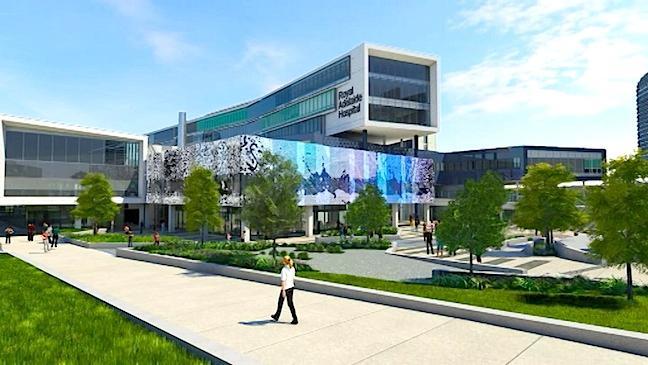
Whether you are flown in, brought by ambulance or even make it to the hospital on foot, all emergency patients will be taken to “Quick Look” areas for triage. There, the degree of urgency needed to treat your wounds or illness will be decided by senior clinicians, who aim to save lives and reduce waiting times.
From triage, you’ll be taken to the most appropriate treatment area. The new ED is co-located with critical services, including emergency imaging facilities such as MRI, CT and ultrasound, all of which can be reached on foot in two minutes.
The ED is also set up with new specialist facilities to respond to major disasters including an outbreak of infectious disease or a toxic chemical spill.
If it’s determined that you’ve managed to contract ebola during your latest overseas visit, you can be safely treated in one of five negative-pressure rooms or a quarantine room that will contain any infection and prevent it from spreading. Should there be major chemical spill, decontamination showers will enable large numbers of affected patients to come out clean on the other side.
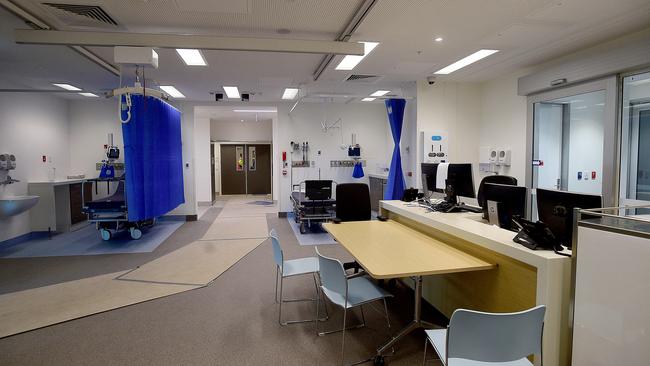
Even if Adelaide literally started crumbling around it, the ED and surrounding hospital could keep treating emergencies created by a major earthquake. The quake-proof building is designed to go into “island mode” and continue to handle casualties. Using its own generators and equipment, it would be able to operate self sufficiently for at least 48 hours as it deals with a flood of casualties in addition to existing patients.
Beyond the ED, if you’re still in critical condition, the ICU awaits, with 60 single inpatient rooms. The unit is near operating theatres and other critical services, and each room has interlocking doors to enable staff to quickly give help in adjacent rooms. And, if you’re ever craving time in the great outdoors, landscaped courtyards and sky gardens are nearby to reconnect you with nature.
Future in operating theatres
Thanks to modern television dramas, many of us imagine a hospital operating theatre to be a darkened, crowded room with surgeons huddled around a patient under artificial lights.
The 40 technical suites at the new Royal Adelaide Hospital — five more than at the old RAH — will make a lie of that dramatic representation. Each suite measures 65 sqm and is much larger than theatres in the current hospital. The majority of suites have large windows to allow in natural light, a welcome relief to staff who can spend hours at a time working in these rooms.
The technical suites include operating theatres, interventional cardiology and radiology rooms, and diagnostic and interventional gastrointestinal and respiratory procedural rooms for tricky, lifesaving procedures.
The technical suites wrap around the front of the building with all critical trauma suites being linked to the emergency department and the helipad by a bank of “hot lifts” for fast transport of patients.
The suites are equipped with the latest Clinical Digital Integration (CDI) technology, to display high-quality diagnostic images and videos on touch screens. For example, if a trauma patient needs a chest X-ray, CDI will connect with the X-ray equipment in the room and automatically display the results on a large digital screen so the entire team can review and understand what needs to be done. The images can also be displayed in other areas of the hospital for training purposes.
The design of the rooms with minimal fixed equipment aims to “future proof” their use as much as possible, so that, as new technology becomes available, the suites will be able to adapt to accommodate this as necessary. Health reform isn’t new. Doctors transform health every day, based on evidence. If we didn’t, we would still be using leeches and sanatoriums.
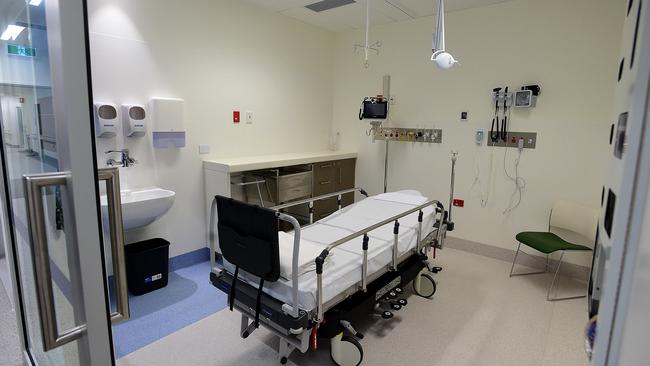
Reconfiguring services; slicing, dicing, privatising; centralising, decentralising — that is what governments do. It’s their job to determine how public funds are spent, what services will be offered where, and to what standard. But the community needs to know what the Government is delivering.
Doctors critically review the evidence to make treatment decisions. We want to see the same commitment from the Government. More importantly, we want to know that the decision-makers have understood both the data and the health implications of proposed changes — not just the budget targets.
Where our system falls short, we should improve it but the results must show a real improvement, not just in statistics, but in happy, healthy people.
Early data used to justify and drive Transforming Health appears to have
been unreliable, unrepresentative or misunderstood. But still acted on, driven by the Government’s primary objective to save millions across the health budget. Problematically, Transforming Health has been fashioned in isolation from other parts of our interconnected health system — namely general practice, private health, out-of-hospital services and rural and regional South Australia.
The crusade has also alienated a good part of our passionate but weary health workforce, who should be partners in change, not conscripts. Real transformation requires a well-informed, inclusive and whole-system view. It needs to be change that doctors can believe in and that patients can rely on.
There have been some success stories as a result of recent change, but these are swamped by the negative press, public concerns and clinical bewilderment at where this is all going.
If the Government wants “better care”, it needs to do much better in transforming its own relationships with health staff and the community, who are expected to be on the journey but don’t necessarily understand the destination.

Rooms with a view
A look inside the patient rooms is proof: if life lands you in the new Royal Adelaide Hospital, the landing should be a soft one, writes Jennifer Hullick
The level of care and comfort available in the 700 single-person rooms in the new site is far beyond the realm of outdated hospital wards. Each patient will be given their own room with a view — one of 700 overnight beds and 100 same-day beds. Natural light falls into each room and the windows open to allow in fresh air.
The hi-tech beds can extend for taller patients and carry more weight if necessary. The beds even have in-built scales to weigh patients without them having to get to their feet. The mattresses have been made for extra comfort and have in-built sensors to help with healing and ensure patients don’t develop pressure sores.
Patients can also take control of their chariot at the push of a button, adjusting bed settings and lighting levels or ordering up meals, entertainment or assistance. New monitors allow patients to check out meal options and order foods that meet their dietary needs. The screen also delivers a choice of digital TV, radio channels, movies on demand, internet and access to a phone handset.
Help from a nurse is available at the press of another button, perhaps faster than ever.
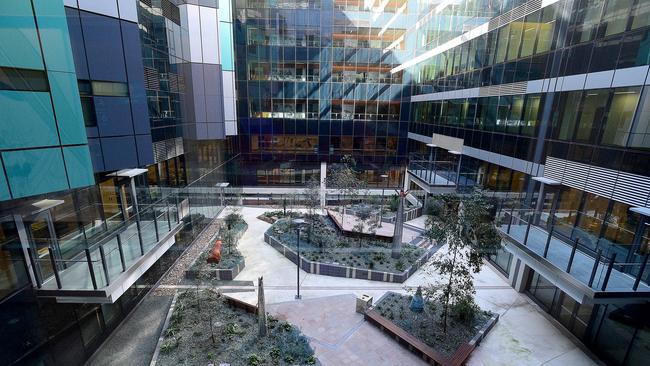
Call buttons are linked straight to nurses mobile phones, and a new style of rounds anticipates more visits from nurses and more information on when they’ll be back.
For patients needing the maximum rest, windows in rooms overlooking the noisier areas of the city have been double and triple glazed. The acoustic design — which exceeds Australian standards — protects patients from the psychological and physiological effects of noise and vibration so healing well is all they have to focus on. At night time, low-level lighting under the bed lights the way for patients and nurses.
Beyond nursing staff, patients will have the incalculable benefit of having a loved one on hand 24/7, thanks to built-in daybeds in each room. The divan-style beds allow for comfortable overnight stays for a family member or friend.
Executive director of new RAH Activation Paul Lambert says the beds recognise the important role of families and carers in patient recovery and comfort.
“As the first major public hospital in Australia to offer 100 per cent single overnight rooms, we have been able to strengthen the ability of family and carers to participate in the healing journey,” he says. For rural and regional patients and their families especially, a place to stay will be a major convenience and cost saver.
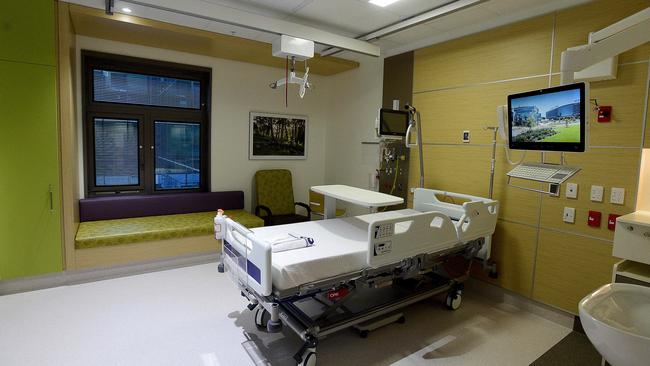
If you’re feeling claustrophobic in your room, patients and visitors can take advantage of over 70 internal courtyards and sky gardens located within two minutes of every room.
Each has its own landscape theme, from soft dunes and waterways of the Coorong to the sprawling desert landscape of the Flinders Ranges, with an Aboriginal garden and three wetlands to incorporate the soothing, healing qualities of nature. No artificial plants or turf used and much of it is locally sourced.
New RAH commissioning director Elke Kropf says the areas create a pleasant environment for all hospital users, allowing immediate access to open-air spaces for physical therapy, reflection and to meet with family and friends.
Right way around
Volunteers will staff main entrance areas to help newcomers, who’ll be shown how to use touchscreen information booths to locate their destination. The screens, which can operate in multiple languages, print out a detailed set of directions to your journey’s end. If geography fails you, you can rely on a combination of signs, maps, graphics and artwork to help you on your way.
The hospital has been divided into five main zones, set up around each of five main elevator cores. Each core has been assigned a letter and an artistic theme. To find a place designated G5, use lift G to go up to Level 5. If you stray from walls adorned with blue water-based murals into green flora motifs, you’ve gone too far.
For outpatient appointments, you can check in using new electronic appointment kiosks, where you will get a numbered ticket with all your appointment details and you can choose to receive text message updates. The screens will call patients to their appointment but, if you’ve got a while to wait, head to nearby cafes, outdoor areas or a children’s playground, and wait for a text message.
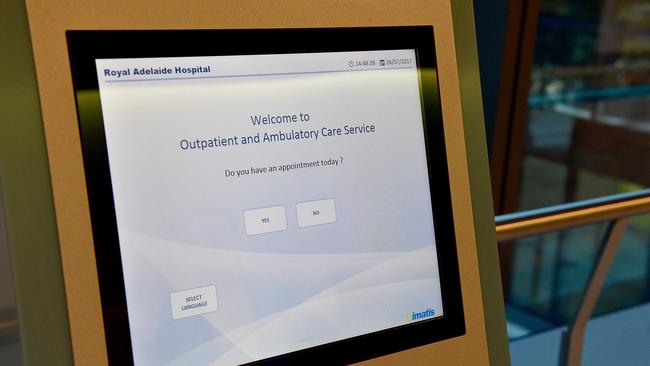
With touch of a button
Once in operation, there will be a plethora of ways to get to the new RAH. Cars can access the site from North Tce and head to multi-level parking areas, or to pick-up and drop-off zones on Levels 2 and 3 to access 15-minute parking bays.
The parking areas offer 2300 spaces for staff, patients and visitors, and operate 24/7, with designated areas for bicycles, motorcycles and 50 disabled spaces. Parking is also available in private parking structures nearby — Wilson City West, Adelaide Convention Centre, or Park ‘n’ Ride the tram from the Adelaide Entertainment Centre.
Those using public transport can use the tram, bus or train with stops close by or further along North Tce.
Those on foot can use two main entrances off North Tce to Level 3, with other entrances on Level 2 to the Mental Health Unit and Acute Assessment Unit.
Chat to a volunteer to find your way around or use the new touchscreen information booths for instructions to your destination.
Cafes are dotted around the hospital for a coffee or a snack or there’s a central food court and retail precinct, which will include a newsagency, florist, hairdresser and ATMs.
Visitors can relax in comfortable waiting areas or head to a landscaped courtyard to channel the healing powers of Mother Nature.
